Consider Water Impoundments and Streams When Grazing Livestock
Proper grazing planning and management can use animal impact to help, not hurt, important water-based ecosystems on your ranch.
On most ranches, water impoundments — such as ponds, lakes and wetlands — along with streams, creeks and rivers are beneficial hot spots of plant and animal diversity.
While these water features and their shorelines and flood plains usually represent small percentages of most ranches, these locations typically support more species and more unique species per unit area than the surrounding land. Some unique plants and animals that depend on these sites include aquatic plants, moist-soil plants, bottomland hardwoods, fish, waterfowl, shorebirds, aquatic reptiles, amphibians, crayfish, mussels and aquatic insects.
The areas adjacent to streams influenced by water and alluvium (the soil, gravel and organic material deposited by moving water) from the streams are called riparian zones. Riparian zones are some of the most productive and important ecosystems in North America and they serve many valuable ecological functions, so protecting them is an important part of grazing management.
When we don’t plan and manage grazing to conserve water features and riparian areas, livestock impacts can negatively limit the diversity and abundance of many plants and animals, degrade water quality, excessively reduce cover, create bare ground and increase erosion. Alternatively, with proper planning and management, livestock can enhance plant and animal diversity and abundance at these locations.
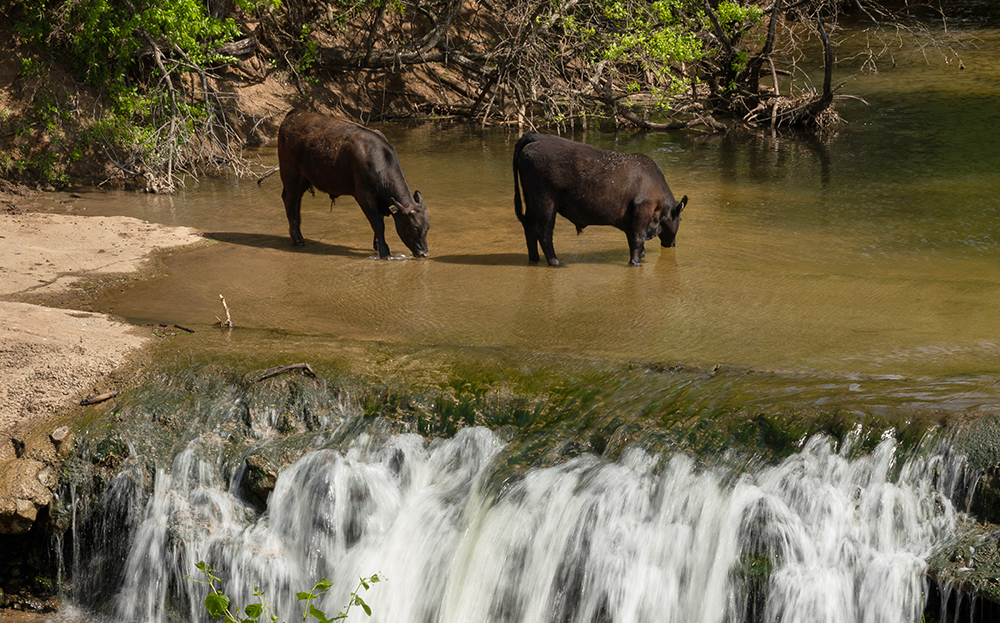
Use adaptive livestock grazing to optimize impact
Appropriate impact and adequate rest are key considerations when planning and implementing adaptive livestock grazing used in regenerative ranching. Adaptive livestock grazing guidelines:
- briefly graze a site,
- typically consume less than 50% of the leaves on the most desirable plants, and then
- adequately rest the most desirable plants after grazing so they completely recover before grazing the site again.
To accomplish this, livestock are moved before desirable plants initiate regrowth and before livestock cause negative impacts such as increasing water turbidity, increasing bare ground or causing erosion. Alternatively, when we want to decrease certain less-desirable plants, we try to graze more than 50% of their leaves and graze them repeatedly before they completely recover.
When water sources are plentiful and well-distributed on adaptively grazed ranches, livestock can graze an impoundment or stream along with the adjacent pasture, because livestock do not have to return to the recently grazed water feature for an extended time for their water needs. In such fortunate but uncommon situations, few or no special grazing management considerations are necessary to conserve the impoundment, stream or riparian area, because abundant water sources allow the recently grazed site to receive plenty of rest.
Unfortunately, water availability is limited on many ranches. Repeated access to impoundments and streams may be necessary to provide water for livestock while they graze multiple paddocks. In such situations, ranchers need to plan and manage water access intentionally to properly steward impoundments, streams and their shorelines and flood plains.
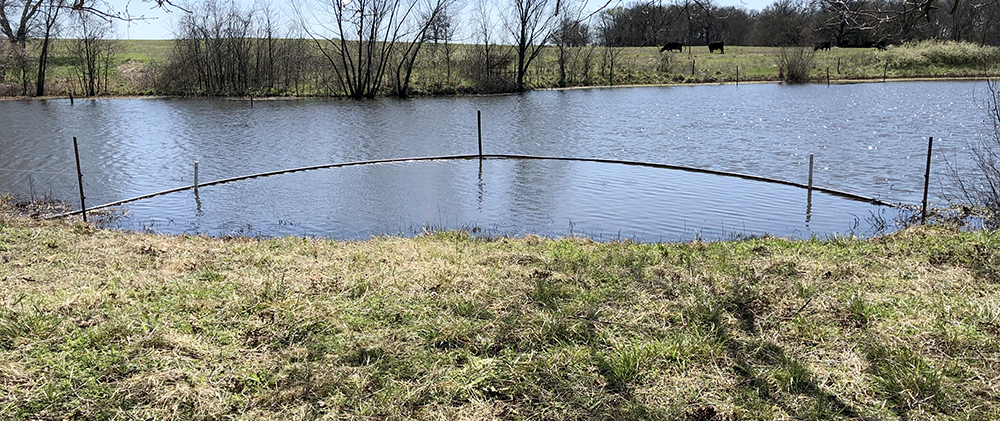
Manage water access for optimum rest
On ranches with limited water availability, most impoundments and streams should be grazed independently from surrounding pastures. This usually requires fencing the water areas separately from pastures so they can be grazed and rested independently. To supply livestock with water:
- one or more livestock water access points can be created at an impoundment or stream,
- water can be piped from an impoundment or stream to a trough, or
- water can be piped to troughs from wells, springs or other water sources.
More information about providing livestock water at fenced impoundments and streams is available in these Noble articles and diagrams: Pond Fencing, Livestock Water Access Point in Pond Fence and Floating Polyethylene Pipe for Livestock Water Access at a Fenced Pond. Also see Freeze-Proof Tanks as a Dependable Replacement to Pond Watering from Oklahoma State University.
Sometimes we use fenced lanes to provide livestock access between water points and paddocks. To prevent excessive livestock impact in lanes, temporary fencing allows periodic movement of lane locations. When lanes have more permanent fencing, a series of gates can allow livestock access to only certain portions of lanes while restricting livestock access to other portions of lanes, which minimizes negative impacts.
Admittedly, it can be difficult to appropriately use and rest the plants in lanes when those lanes serve multiple paddocks, but it is generally better to compromise small portions of a property that occur in lanes rather than compromise more ecologically important impoundments, streams and their shorelines and flood plains.
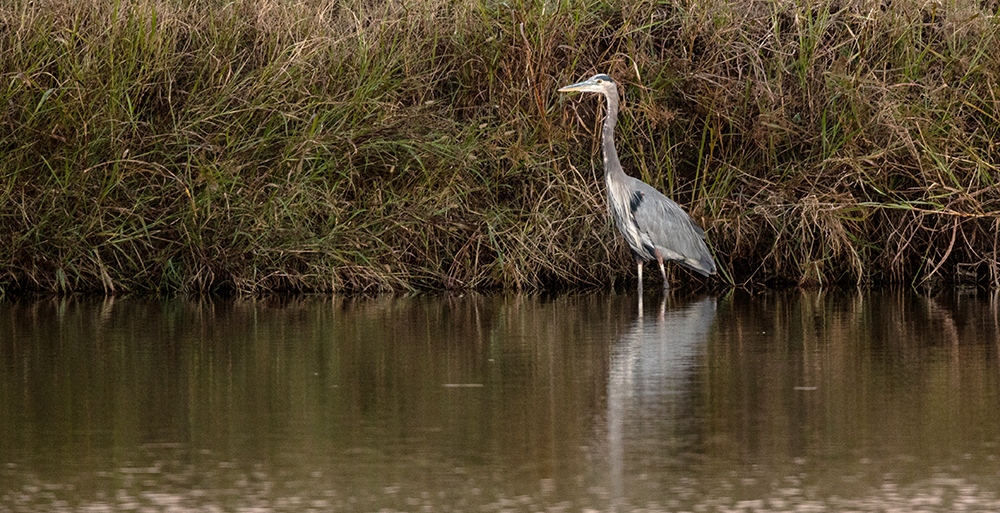
Diversify livestock disturbances
Additional to managing livestock impact and rest, another important concept of adaptive grazing is diversifying disturbances. It means to vary the timing, intensity, extent and type of disturbances. Diversification of disturbances helps optimize diversity and ecosystem health. Grazing, fire, drought, heat and freezing are examples of natural disturbances. When diversifying grazing disturbance, it is best to graze a site at different seasons, for different lengths of time, with different stock densities (numbers or weights of animals per unit area), and with different types of livestock when possible.
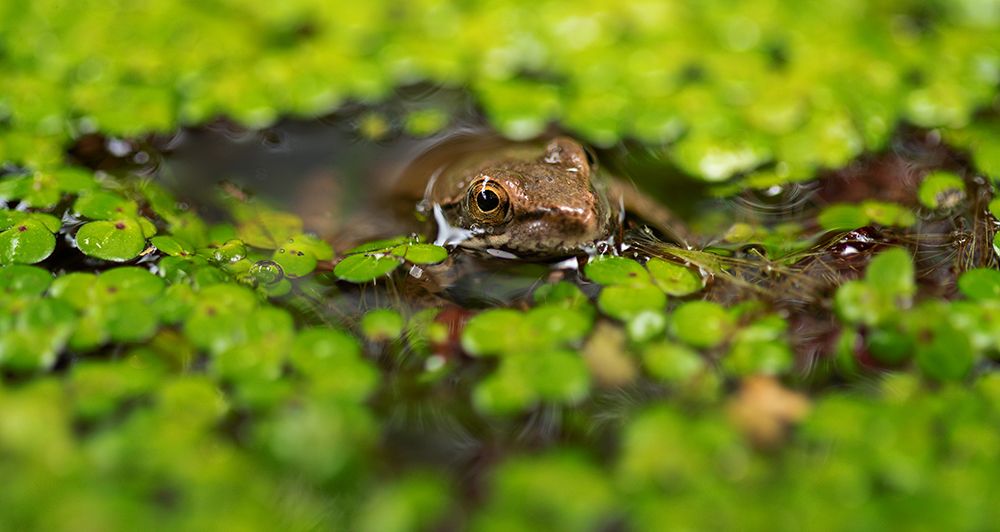
The bottom line
Examine impoundments, streams, their shorelines and flood plains on your ranch to determine whether they demonstrate good stewardship. None of us are perfect, so there is almost always room for improvement. Appropriate grazing management and rest at these sites can improve water quality, soils, cover, forage production, diversity and ecosystem health.
For more about how to manage in ways that are positive for your ranch’s watershed, see Regenerative Ranching Runs Downstream.
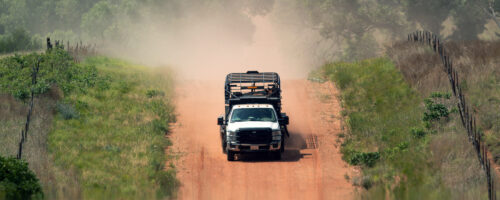
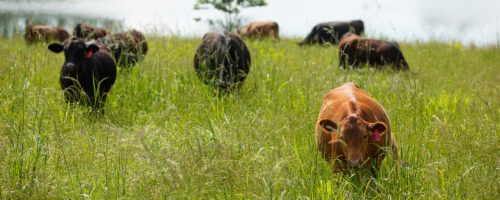
Comment
Leave a Reply
2 comment on: "Consider Water Impoundments and Streams When Grazing Livestock""

Dave Brown
April 21, 2024Can I pump pond water into large tanks while water is plentiful, to be used later when water is scarce for watering livestock. Thank you
Mike Porter
April 23, 2024This is probably possible, but creating deeper ponds, pumping water from a well, or harvesting rainwater from the rooves of buildings on the ranch may be better options, depending on your location. If you would like to discuss your needs specifically and determine what option might work best for your operation, please feel free to utilize our mentorship program to speak 1:1 with our experts.